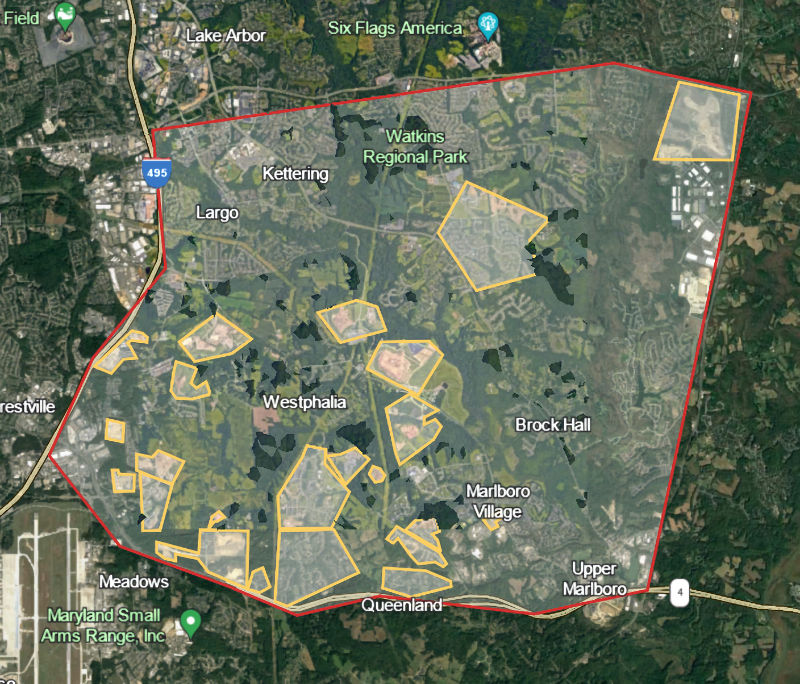Let’s take a thin-slice look at a small section of Maryland. Over the past decade, the rapid development of a 25,265-acre parcel of land between the 495 Beltway, Route 4, Route 301, and Route 50 has had profound effects on the local ecosystem. The conversion of 3,585 acres of farm and woodland into housing and commercial properties has, in a Prima Facie manner, disrupted the natural balance, pushing foxes, raccoons, and coyotes into residential neighborhoods. This shift in habitat has raised serious concerns about the dangers these animals could pose, including the spread of diseases, attacks on pets and people, and property damage.
Disease Risks
As these wild species adapt to suburban living, the potential for disease transmission becomes a significant concern. Foxes, raccoons, and coyotes are known carriers of various zoonotic diseases, including rabies, distemper, and leptospirosis. The increased proximity to humans and domestic animals creates a breeding ground for potential disease outbreaks, underscoring the importance of addressing the health risks associated with wildlife intrusion.
Attacks on Pets and People
The encroachment of foxes, raccoons, and coyotes into neighborhoods heightens the risk of encounters with domestic pets and, in some cases, humans. As these animals search for food sources in residential areas, conflicts may arise, leading to attacks on pets and, in rare instances, even posing a threat to human safety. This shift in behavior demands a nuanced approach to managing wildlife populations to ensure the safety of both animals and residents.
Property Damage
The presence of wildlife in urban environments brings about new challenges, including property damage. Foxes, raccoons, and coyotes may dig, burrow, or scavenge for food, resulting in destruction of gardens, lawns, and, in extreme cases, structural damage to homes. The economic implications of such damage underscore the need for effective wildlife management strategies to mitigate the impact on homeowners and communities.
Our Responsibility in Habitat Destruction
The transformation of natural habitats into urban landscapes is often driven by the increasing demand for housing and commercial spaces. However, this shift comes with a responsibility to manage the consequences of habitat destruction. If we, as a society, encroach upon wildlife habitats for our own needs, it becomes imperative to take proactive measures to maintain a balance in the ecosystem.
Owing It to Wildlife
Acknowledging the impact of urbanization on wildlife, we owe it to these creatures to manage their populations responsibly. This involves recognizing the unintended consequences of habitat destruction and taking steps to address the resulting challenges, including increased human-wildlife interactions and conflicts.
Ethical Trapping as a Solution
Among the various methods of wildlife management, ethical trapping emerges as a crucial tool for achieving a delicate balance between human needs and ecological preservation. Ethical trapping involves humane capture and removal, minimizing stress and harm to the animals while addressing the challenges posed by their increased presence in urban areas.
The Role of Ethical Trapping for Fox, Raccoon, and Coyote
Ethical trapping stands out as the most effective approach in managing populations of foxes, raccoons, and coyotes. This method allows for controlled reduction in numbers, preventing overpopulation and mitigating the associated risks of disease transmission, attacks on pets and people, and property damage. The humane nature of ethical trapping ensures that wildlife welfare is prioritized, aligning with the ethical responsibility we have towards the creatures affected by habitat loss.
Conclusion
The clash between urbanization and wildlife habitat has far-reaching consequences, impacting not only the animals but also human communities. As we continue to reshape landscapes for our own use, we must recognize the resulting challenges and take responsibility for managing wildlife populations ethically. Ethical trapping emerges as a crucial tool in striking a balance between the needs of a growing urban society and the preservation of biodiversity, fostering coexistence for a harmonious future.

